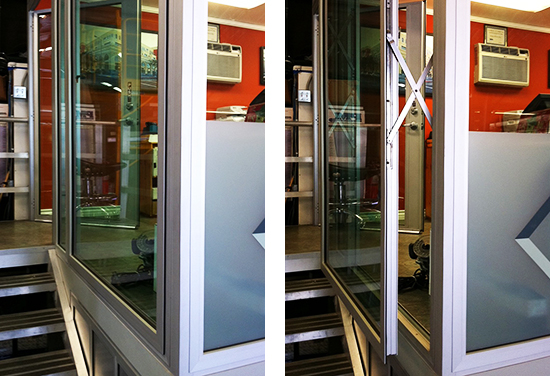Pictures at a Window Factory
We like learning how things are made- something that is partially motivated by the natural curiosity of human nature, but also by the pragmatic need to gain tools for an efficient, knowledge-based architectural process.
Knowing as much as possible about construction, in particular, is a critical component in making the most appropriate solutions for specific issues and conditions, determining alternatives and options, as well as innovative applications of materials, building technologies and design strategies. We're also a nosy bunch who need an excuse to wrench ourselves away from the office every once in a while...
So, last week, MYD had a field trip to the manufacturing facility for Metal Window Corporation, who fabricated a custom window for a recent remodel a few weeks ago (more project details to come soon...) It's an added benefit when manufacturing actually takes place in Southern California, not only so we can satisfy our curiosity, but to enable better coordination, collaboration and understanding, as well as to reduce the impact of transportation, shipping and travel.
When it comes to standard doors and windows, one can typically know what to expect; however, when designing custom products, it gets a bit more complicated. That's when a thorough knowledge of process allows for creativity within the boundaries of what is possible, something especially important when you take into account the degrees of separation between architect and fabricator.
A brief overview on how it works: Depending on the type and size of a particular opening, as well as aesthetic considerations, the appropriate aluminum frame profile is selected, cut and welded to create the desired form in which the glass is inserted, which is then covered with a removable glazing bead. Below is a detail of a thermally-broken assembly, meaning the frame isn't welded at the corners (which is the standard process, as shown at the image on the right); the purpose being to create a separation such that the metal cannot conduct heat between the interior and exterior. This type of application is used in extreme climates, so we don't see it too often here in California, but it's still interesting to have a visual.
Before getting too far into the technical details of window fabrication, we thought we'd share a new product application we discovered during our visit- one that could definitely be utilized in a contemporary design, where large expanses of fixed glass occur that don't typically allow for natural ventilation. The images below are of a large window wall, both closed and open. A great solution for full-height windows, this design doesn't block views and maintains an open feel and allows for daylight and a visual connection to the exterior. Hinges at both sides enable the smooth opening and closing of the panel, and because it doesn't swing out, like a typical casement window, the issue of lateral/wind forces isn't a problem.
So, we were pretty excited about it, and hope to use this in a project one of these days soon...
That said, a commitment to hands-on education is essential to enhancing one's knowledge and awareness of new technologies and best practices. It also gives us the chance to find new ways to approach design components, learn the ins and outs of how things are made, and, of course, get out of the office every now and again.
A win-win all around. Have a great week!




